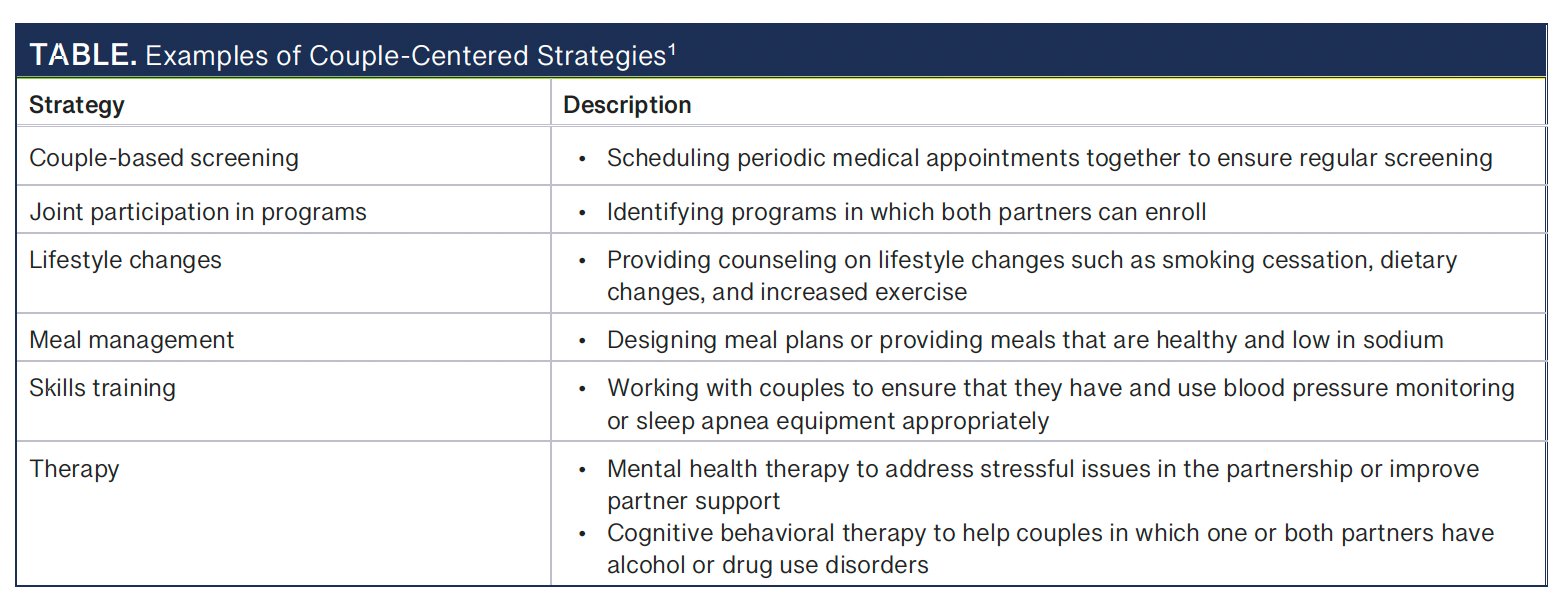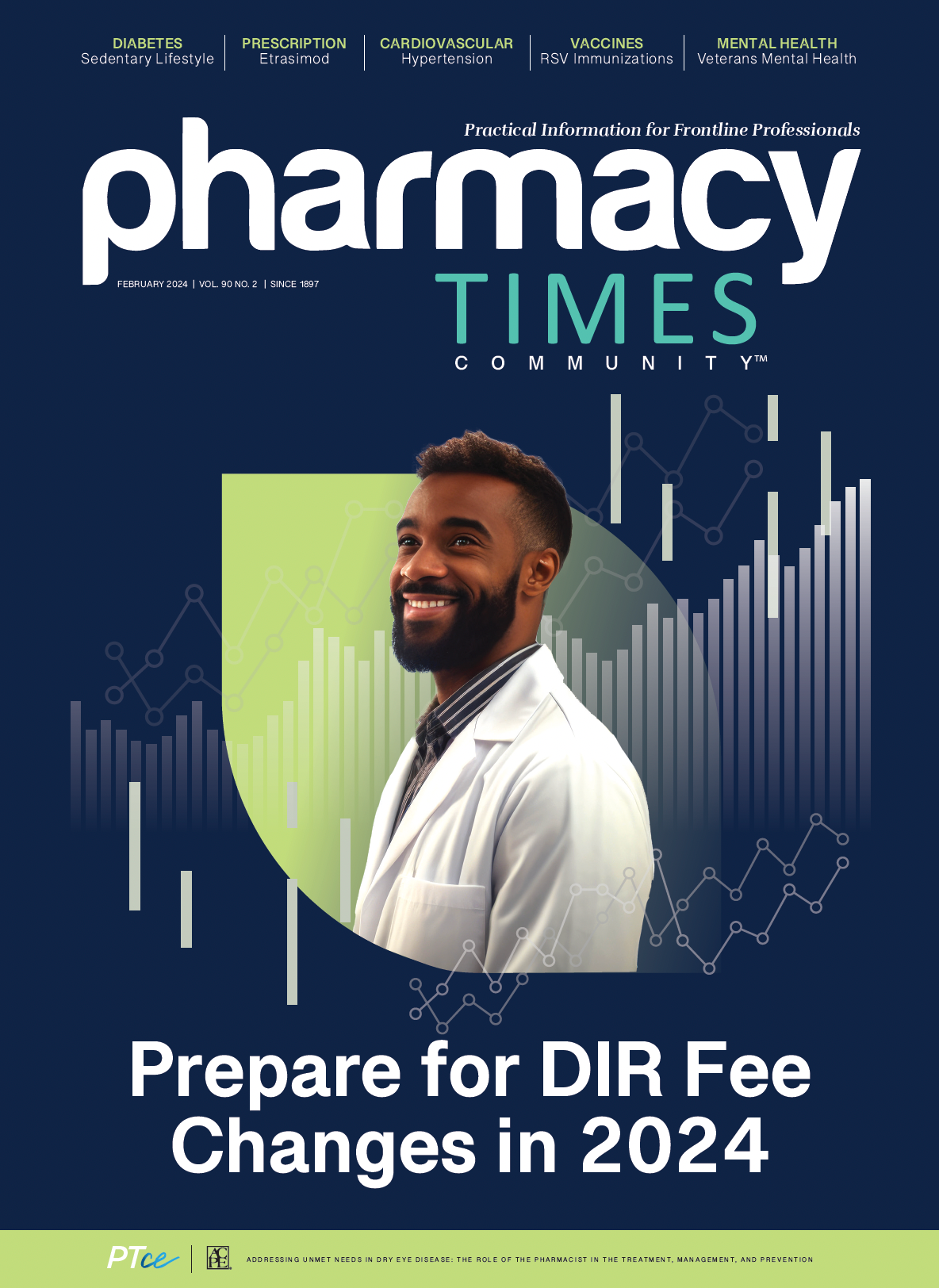About the Author
Jeannette Y. Wick, MBA, RPh, FASCP, is the director of pharmacy professional development in the Department of Pharmacy Practice at the University of Connecticut School of Pharmacy in Storrs.
Publication
Article
Pharmacy Times
Author(s):
This Valentine’s Day, remind patients to focus on their heart health
In December 2023, the Journal of the American Heart Association (JAHA) published a study that examined patterns of hypertension in 4 countries (China, England, India, and the United States). Its goal was to examine health concordance (the likelihood that both married or committed partners will have the same health issues) among individuals with hypertension.1 The study had an enormous sample size, with 6514 Chinese, 1086 English, 22,389 Indian, and 3989 American individuals enrolled. Investigators found that in nearly half the couples, all of whom were heterosexual, both partners had hypertension. The findings were similar regardless of residence, education, or income.1
Image credit: grinny | stock.adobe.com

This study’s implication is simple: Couple-centered strategies could improve hypertension diagnosis and management in middle-aged and older adults.1 Might these strategies be practical and easy to implement?
COUPLE-CENTERED STRATEGIES
In many ways, concordant hypertension makes sense. Married couples tend to share environments, meals, and social activities, all of which can aggravate or alleviate the development of hypertension.2 People also tend to look for partners who have similar likes, dislikes, and traits, a property called assertive mating.3,4
Researchers have looked at couple-centered strategies to deal with a number of health conditions. The TABLE1 lists a few interventions. Making lifestyle changes (eg, increasing physical activity, reducing stress, making better food choices) may be difficult if a spouse or partner is uninterested in making similar changes.5 Spousal collaboration can have a powerful influence on health care. From a patient viewpoint, the results highlight the importance of having health-related conversations with partners and using mutual influence and shared approaches for better hypertension management.1
IN THE PHARMACY
Pharmacists and technicians are likely to care for members of the same family and often listen to one spouse’s concerns about the other. Pharmacists can talk to couples about the importance of controlling blood pressure to avoid complications, emphasizing that should complications such as stroke occur, study results indicate that the spouse’s overall health is apt to decline.6 Caregiving can be stressful and is often fraught with anxiety and depression.7-9
Furthermore, there is strong evidence describing couples’ overlapping cardiometabolic risks: If one partner has type 2 diabetes or heart disease, risk for the other partner almost doubles.10,11 For many married couples, sleep concordance also can be a concern.5

One area in which pharmacists can and should ask about a patient’s partner is smoking cessation. Smoking is a significant risk factor for hypertension. One partner often influences the other’s actions regarding smoking initiation, cessation, and relapse. At least 1 study has indicated that individuals who successfully quit smoking relapse more often if they are partnered with someone who continues to smoke than if they are partnered with someone who does not smoke.12 For this reason, asking patients who are looking for smoking cessation support whether their partner smokes and if the partner would also be interested in trying to quit might increase success rates.12
Other substance use disorders can also be concordant in married couples, and that circumstance creates an opportunity to counsel couples to work toward healthier lifestyles together.13 With a greater number of medicationassisted treatments (MATs) available to help people abstain from alcohol (ie, acamprosate, disulfiram, methadone, naltrexone) or drug use (ie, buprenorphine, naloxone, suboxone), this is a good counseling opportunity. Knowing that individuals who use drugs who are married or living together are more likely to complete MAT and have longer lengths of sobriety can galvanize couples’ efforts toward abstinence.14
CONCLUSION
Although the JAHA study examines the likelihood of concordant hypertension in couples, the findings demonstrate that partners’ health is linked in many ways. Sharing lives creates a likelihood that partners’ health trajectories will be similar. Having a stable, fulfilling relationship provides accountability, emotional support, and motivation. Pharmacists can encourage committed partners to work together to improve their overall health.
Jeannette Y. Wick, MBA, RPh, FASCP, is the director of pharmacy professional development in the Department of Pharmacy Practice at the University of Connecticut School of Pharmacy in Storrs.

Stay informed on drug updates, treatment guidelines, and pharmacy practice trends—subscribe to Pharmacy Times for weekly clinical insights.